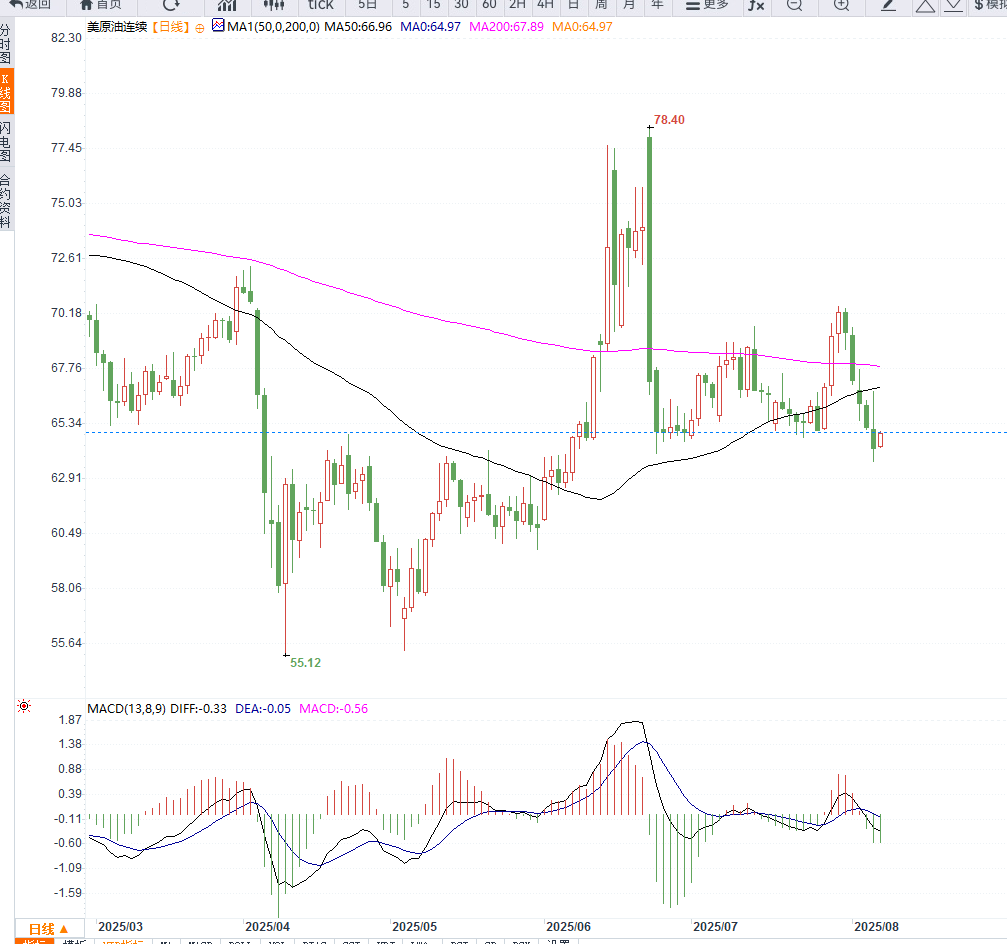Crude oil trading reminder: Although EIA inventories fell more than expected, oil prices rose and then fell, maintaining a volatile adjustment
2025-08-07 10:19:48
Earlier, the two major oil price benchmarks fell to an eight-week low on Wednesday due to market concerns that the United States may increase energy sanctions on Russia.
News of a possible high-level meeting between the United States and Russia provided some relief to the market. White House officials revealed that US President Trump may meet with Russian President Vladimir Putin next week, even though the US is still preparing to impose "secondary sanctions" on Russia, potentially covering Asian countries, to force Moscow to make concessions on the Ukraine issue.

"Even if there are signals of diplomatic negotiations, the market cannot rule out the potential impact of new trade tariffs on the crude oil supply chain." - said Hiroyuki Kikukawa, chief strategist at Nissan Securities Investment Co., Ltd.
A sharp drop in U.S. crude oil inventories provided substantial support to the oil market. Data released by the U.S. Energy Information Administration (EIA) showed that U.S. crude oil inventories fell by 3 million barrels in the week ending August 1, bringing total inventories to 423.7 million barrels, far exceeding the market's previous forecast of a 591,000-barrel drop.
The main reason for the inventory decline was the increase in U.S. crude oil exports and a significant increase in refinery operating rates. In particular, refinery utilization rates on the Gulf Coast and West Coast rose to their highest level since 2023, reflecting that domestic refining demand remains strong.
Despite positive inventory data, market sentiment remains constrained by multiple uncertainties. The OPEC+ alliance currently plans to further increase crude oil supply, which may put pressure on oil prices in the medium term.
"As OPEC+ maintains its production increase plan, the outcome of the US-Russia talks is still unclear, and there is a new round of tariffs on India and Asian countries, investors may continue to choose to wait and see in the short term." - Hiroyuki Kikukawa added.
The extension of sanctions to India and other Asian countries could alter the global crude oil trade landscape. Trump announced on Wednesday that he would impose a 25% tariff on Indian imports due to the country's continued imports of Russian crude oil. The tariff will take effect 21 days after August 7.
In addition, Trump also said that if Asian countries do not stop purchasing Russian crude oil, they may be subject to punitive tariff policies similar to those imposed on India.
From a technical perspective, the daily chart of WTI crude oil shows initial support near $64, suggesting a potential double bottom formation in the short term. The current candlestick chart has closed with long lower shadows for two consecutive days, indicating active bullish buying in the $60-64 range. The MACD indicator is converging below the zero axis, suggesting weakening downward momentum.
If the price subsequently stabilizes above the 20-day moving average (around $66), it is expected to challenge the $70 mark. Conversely, if it falls below $60, it will open up further downside potential and test the previous low support.

Editor's opinion:
The current rebound in oil prices is based on declining inventories and market expectations surrounding negotiations, but the true drivers of medium- and long-term oil prices remain the pace of OPEC+ production increases and the evolution of global geopolitical risks. As the United States further links energy issues with trade policy, Asian countries' crude oil import strategies may face a more complex decision-making environment, further reshaping the regional energy market structure.
- Risk Warning and Disclaimer
- The market involves risk, and trading may not be suitable for all investors. This article is for reference only and does not constitute personal investment advice, nor does it take into account certain users’ specific investment objectives, financial situation, or other needs. Any investment decisions made based on this information are at your own risk.





















